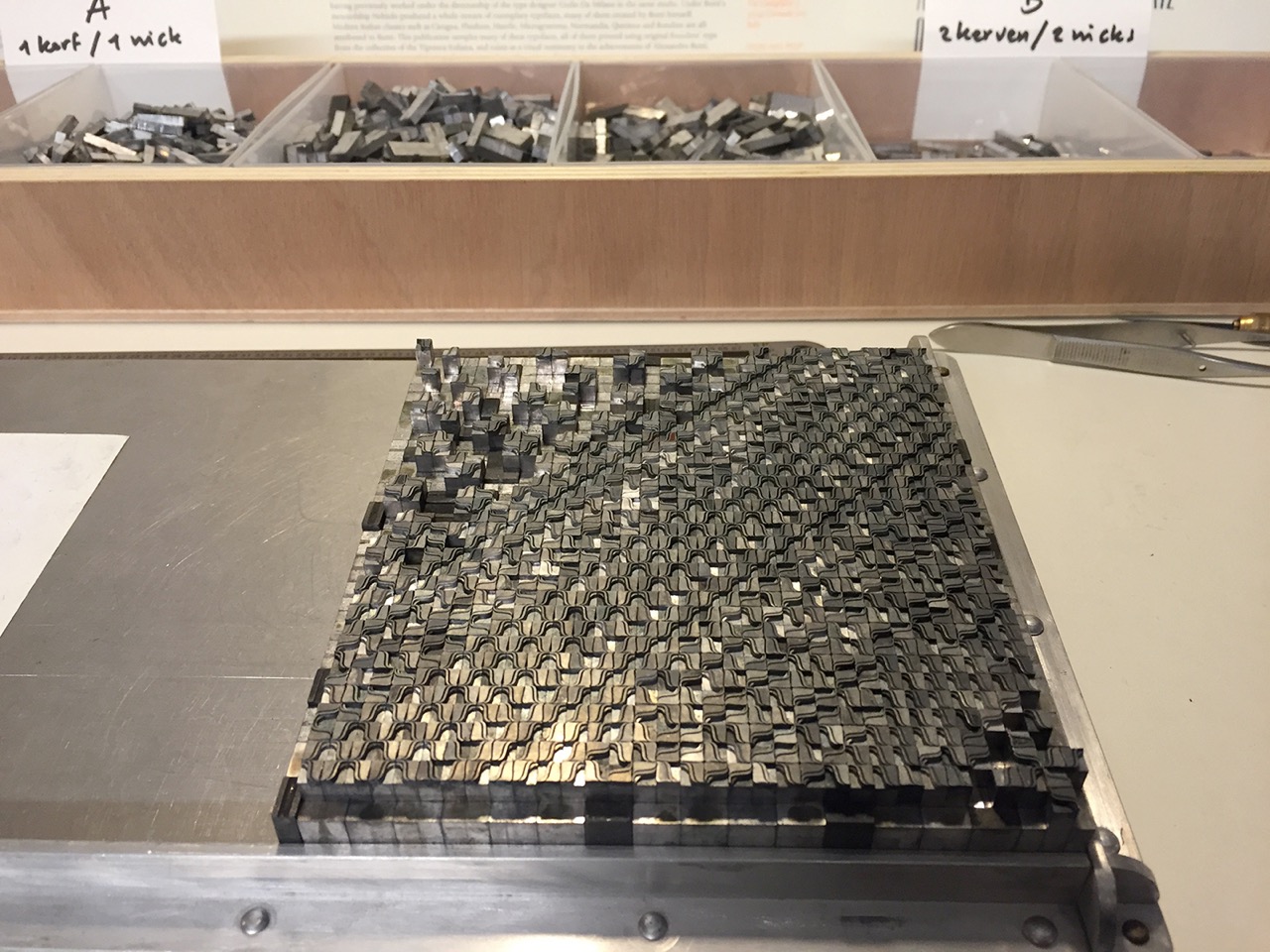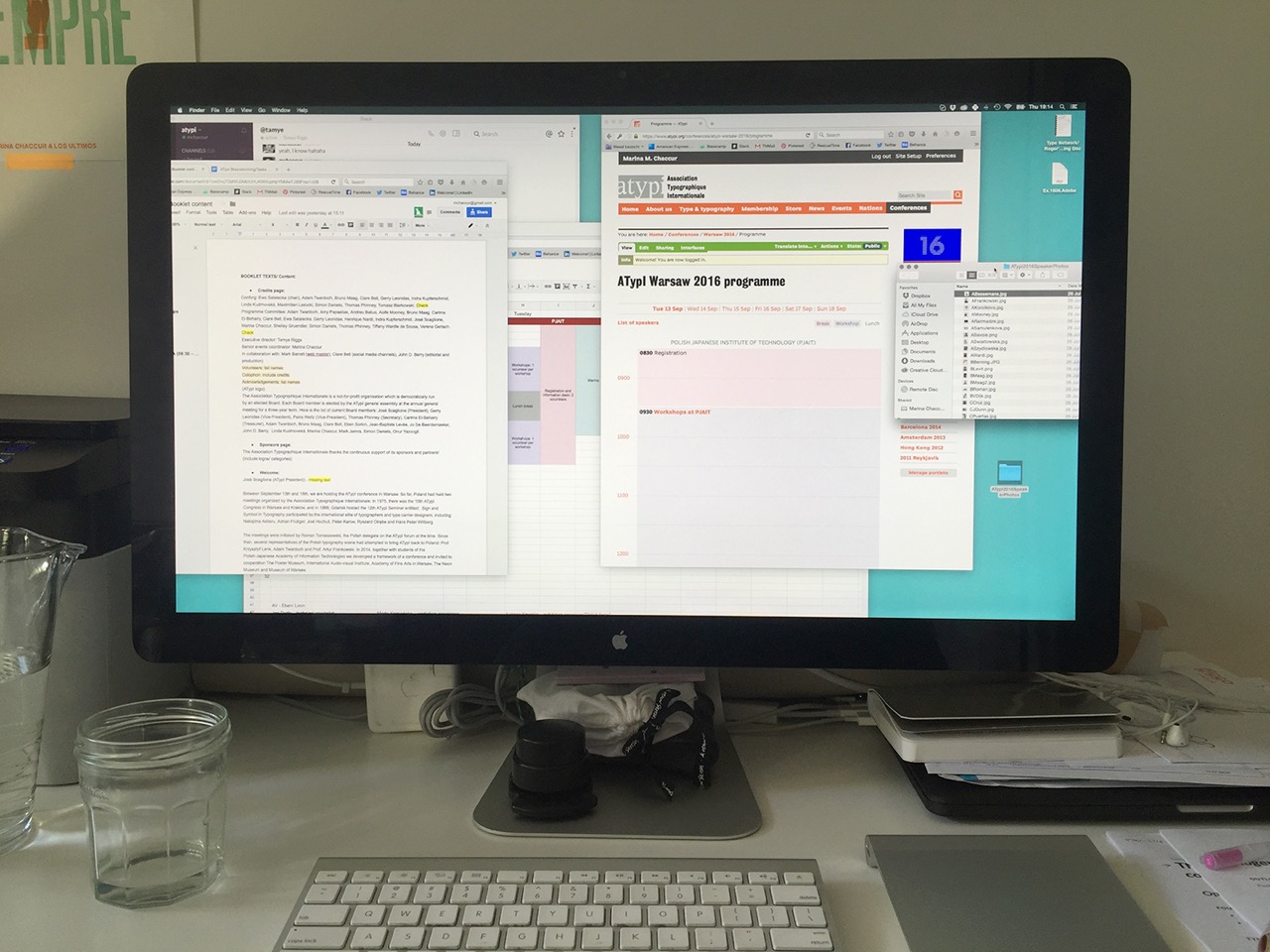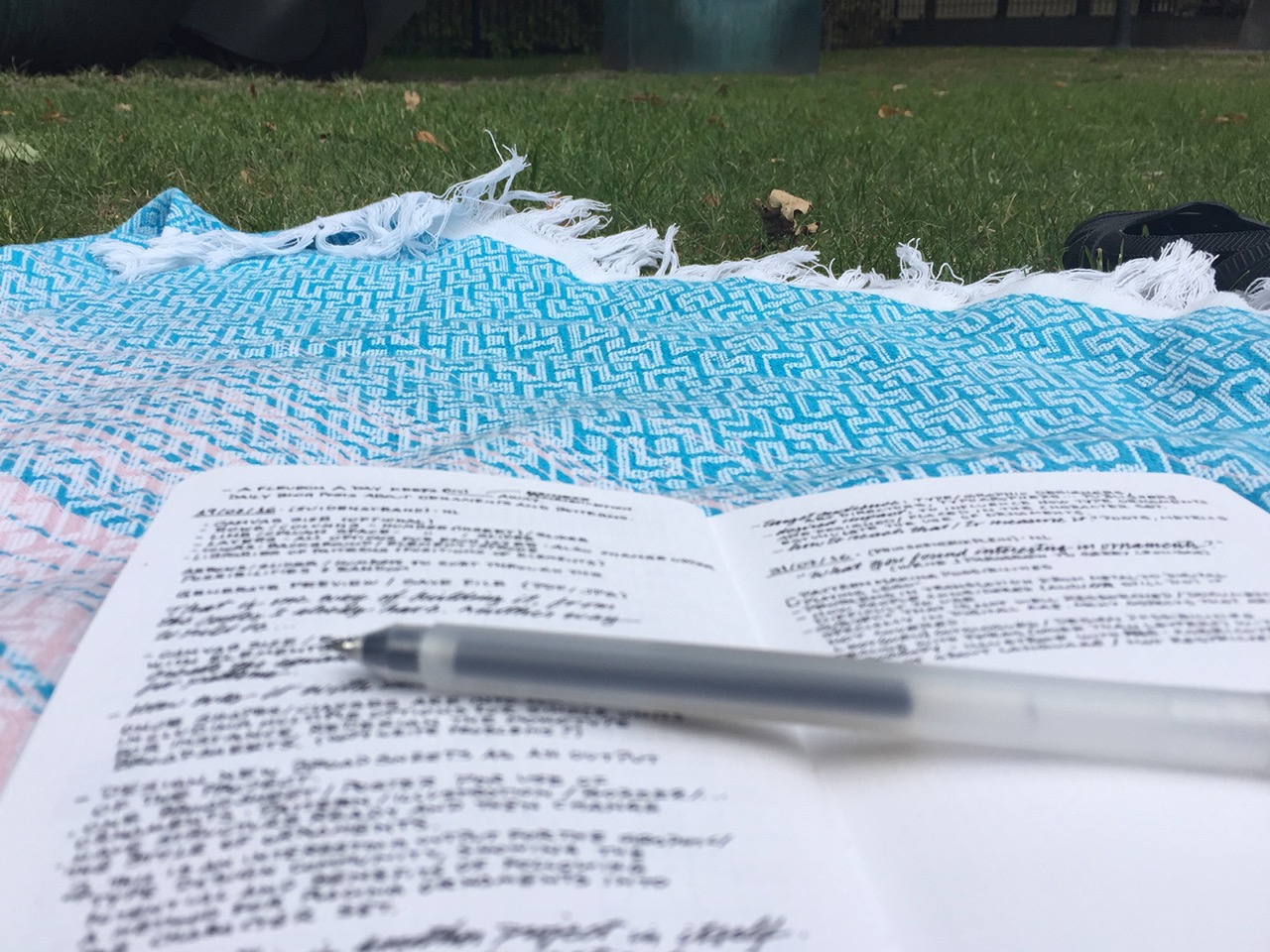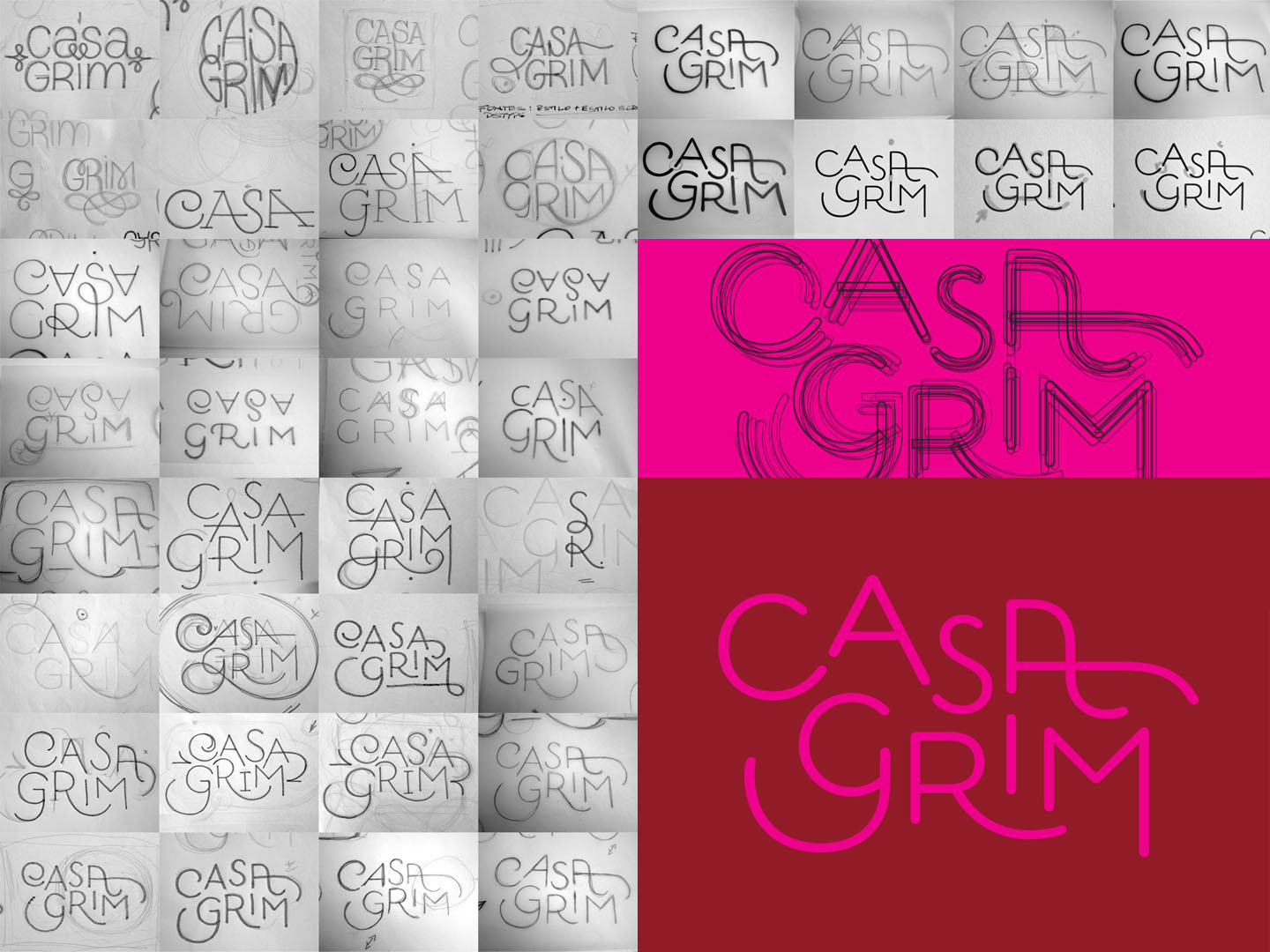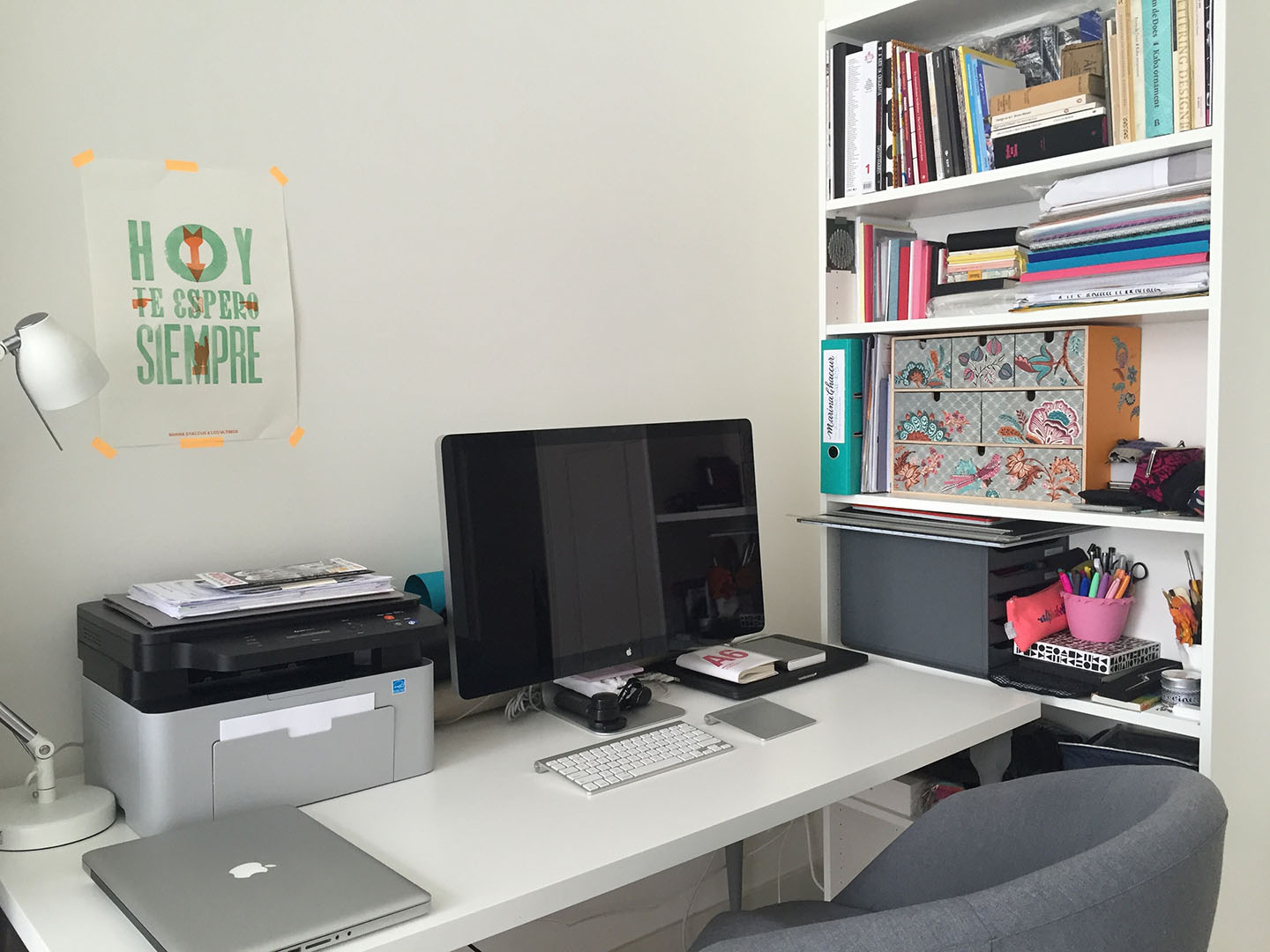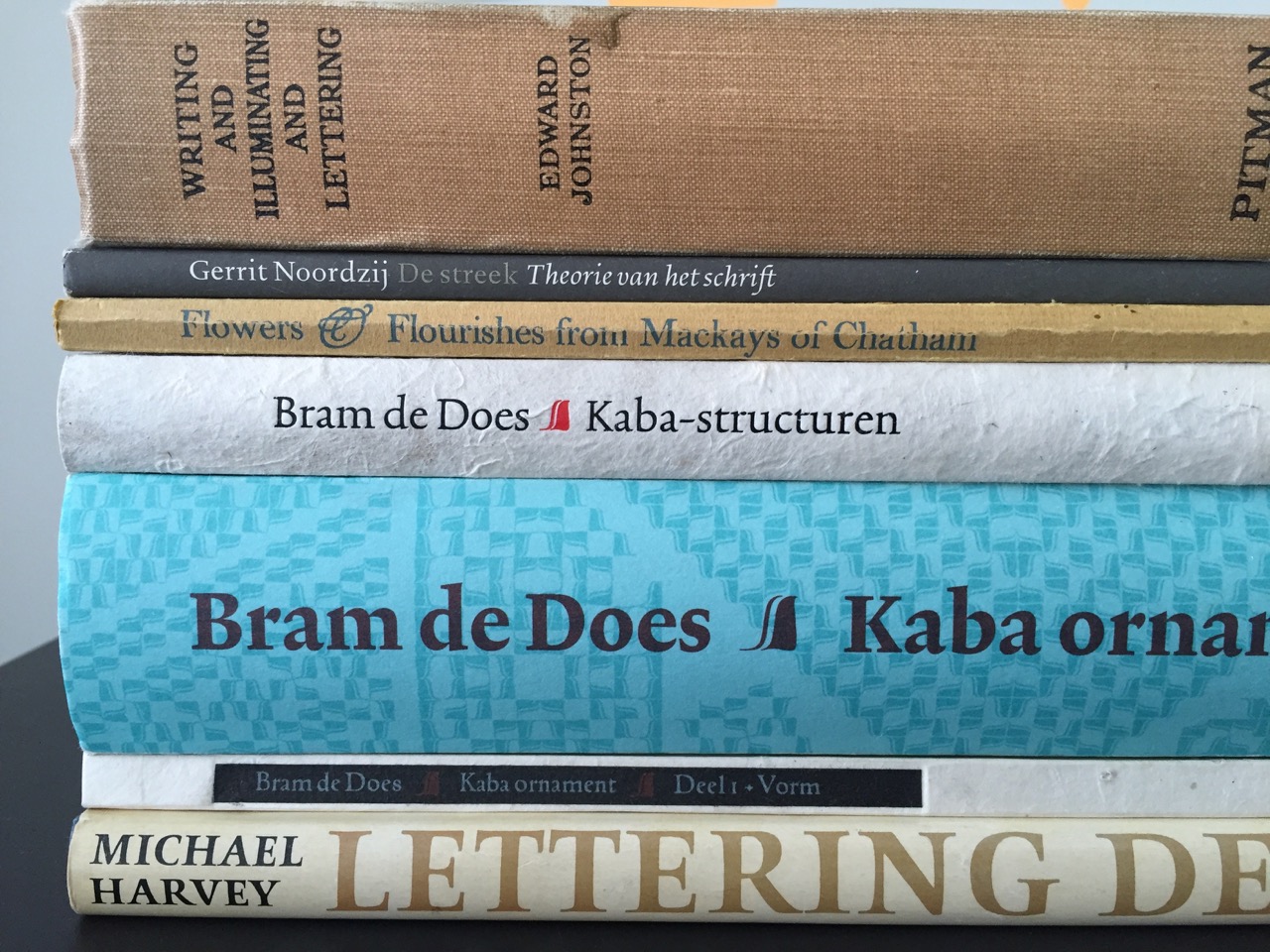Nina, continuing the Den Haag theme (well, not anymore!) chose Marina to be our next interviewee. Honestly, one of the emails with five chosen questions I sent to Marina started with (quote:) “I want to be your friend!” I didn’t even care what she will think of me, proposing friendship out of the blue. In case you are wondering why I am sharing this with you, just read on and you will probably tell her this as well.
She is full of energy. This energy is present in every line Marina wrote, makes it feel like she is talking to us, telling some of the “behind the scenes” stories. She was so engaged in writing the most whole answers, no ego or vanity involved.
Now, I am not sure what I should advise you to drink while reading the interview. As you will see few lines down, Marina offers some flavorful choices. Either way, I know you will enjoy what she has to say.
The warmup
Write three sentences about you
– I’m wearing my heart on my sleeve.
– Always been a freelancer, enjoying not having a routine and fixed working hours.
– Constantly trying to reduce anxiety and self-criticism levels. Getting somewhat better at it lately.
What is your soundtrack while working?
A wide variety of music genres (mostly) or silence (only for reading/ writing something that I really need to focus on).
When I know what I have to do and need some hours for only drawing or building shapes, I leave my old laptop on the side of the table playing series, Netflix or Brazilian soaps. The fact that I do follow those soaps, on a daily basis (at least when cooking lunch and/ or dinner), even when living abroad, is usually surprising to some people.
Name three locations: a current location, a location you love, and a fantasy location
– The Hague: current + love. The honeymoon period with the city was over long ago and I still love it.
– Japan: love + fantasy. Would really like to visit Japan at some point, especially if there are cherry blossoms in full bloom.
– Imaginary place: fantasy + current. In the past months I’ve been sort of dreaming about a specific scenery, and I have no idea if such place actually exists, but would be very emotional if one day I find it in real life. There is a field, with a tree and some mountains involved.
Your favourite glyph to design and the most challenging one?
On more than one occasion I’ve been told how people find it interesting that I am attracted to complicated things and how some of them seem very simple to me. On the other hand, I feel that some simple things are harder for me to deal with. That is both in life and in my design work, so added to the fact that I love curves, the ‘s’ and double story ‘g’ are my favourites. They are challenging to get rightly balanced, but I enjoy to spend a long time tweaking the shapes. On the contrary, a simple sans ‘k’ is my little bit of a nightmare and I do struggle with that. In that case I try to get it done as quickly as possible, leave it aside and revisit later.
What is something you did that you are proud of?
I guess there are many things that in a secret and small way I am proud of, which usually translates to not really demonstrating being proud of it at all, since I am also my worst critic and it’s very difficult for me to be (completely) satisfied with something. But choosing one special thing, it was my impulsive decision to move to The Hague two years ago. Last year I had to renew my residency permit and it was a very long and expensive process of preparing documents, applying and waiting for a decision. In June I was gladly relieved when I got the new resident card, which means that for a while longer I’m officially home – and according to the Dutch immigration requirements for a self-employed visa, it means my “business activities serve an essential Dutch interest”. Next year I’ll have to do it all over again and it is worth it – for many reasons, including being able to enjoy the local beach during all seasons. Yes, I went into the freezing water during winter and enjoyed it. Was kind of proud of that too! 🙂
The visual
A photo of your favourite beverage, and something to eat with it
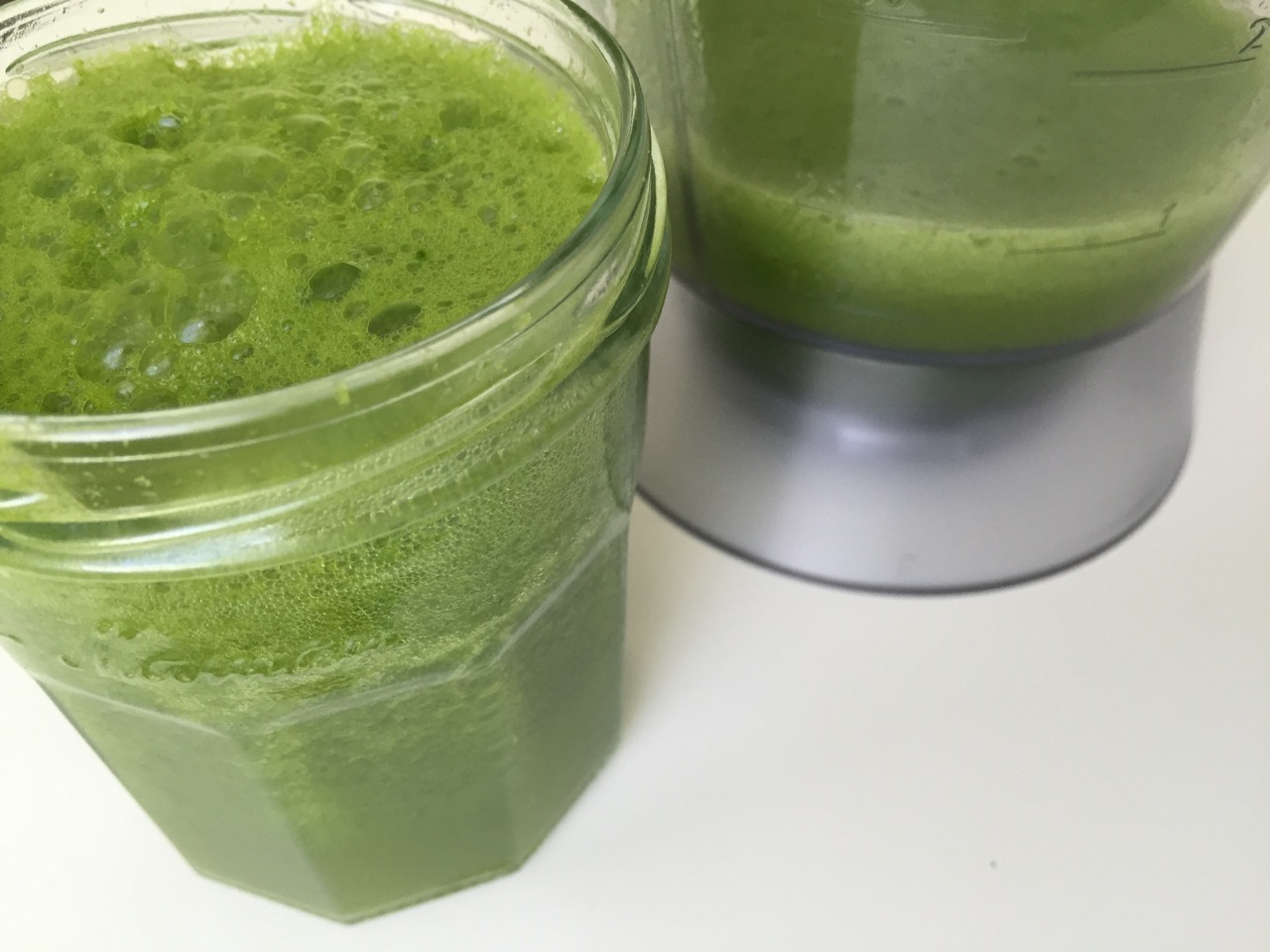
Frequently (usually for breakfast) I blend spinach, lime/lemon, apple with a bit of protein powder and demerara sugar/ agave syrup (when needed). Sometimes I had toasted corn bread with ghee with it, but now I prefer to drink it on its own. Alcoholic speaking, I have some very specific preferences, like the Kompaan 39 and Van Kleef Oude Jenever, both produced in The Hague, Kappa pisco from Casa Lapostolle and Carmenere wine from Antiyal, both from Chile, Taittinger Nocturne champagne and for cocktail, a well prepared Espresso Martini. When back in Brazil, a caipirinha of cashew fruit and lime, accompanied by fried cassava or rice dumplings.
A photo of your work process
A photo of your desk, working space

Working space in São Paulo. Even after two years, my working space in The Hague is still kind of minimal. I miss having all of my books and tools at hand, so every time I travel to São Paulo, I pack a bit more of the office there to bring with me.
What do you see from your window?
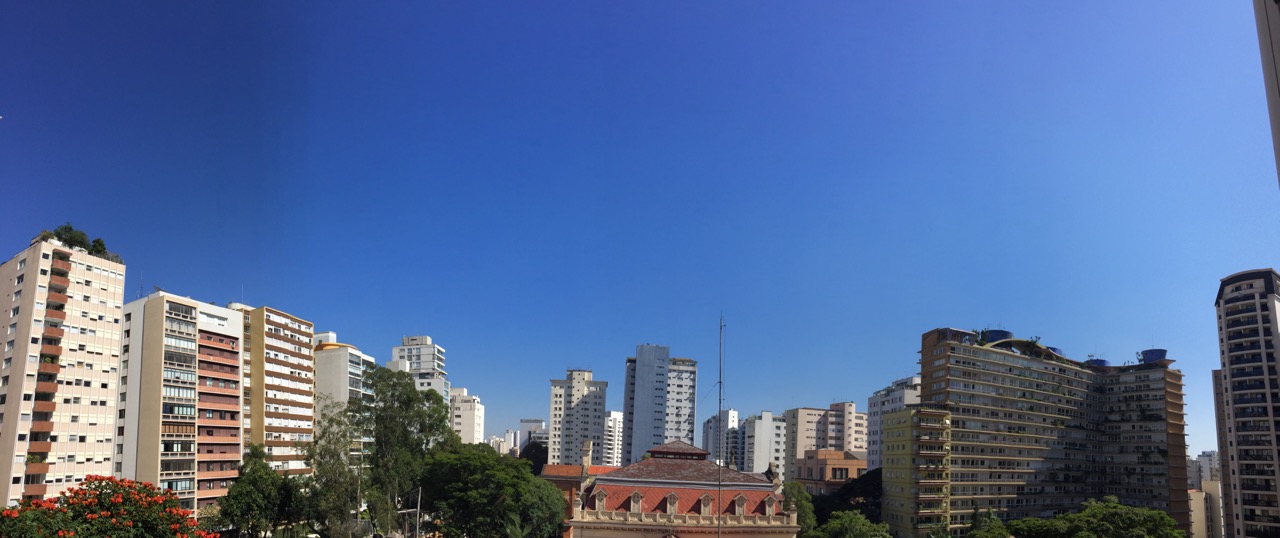
The São Paulo view is actually from my bedroom rather than the office, which would be mostly the building next door.
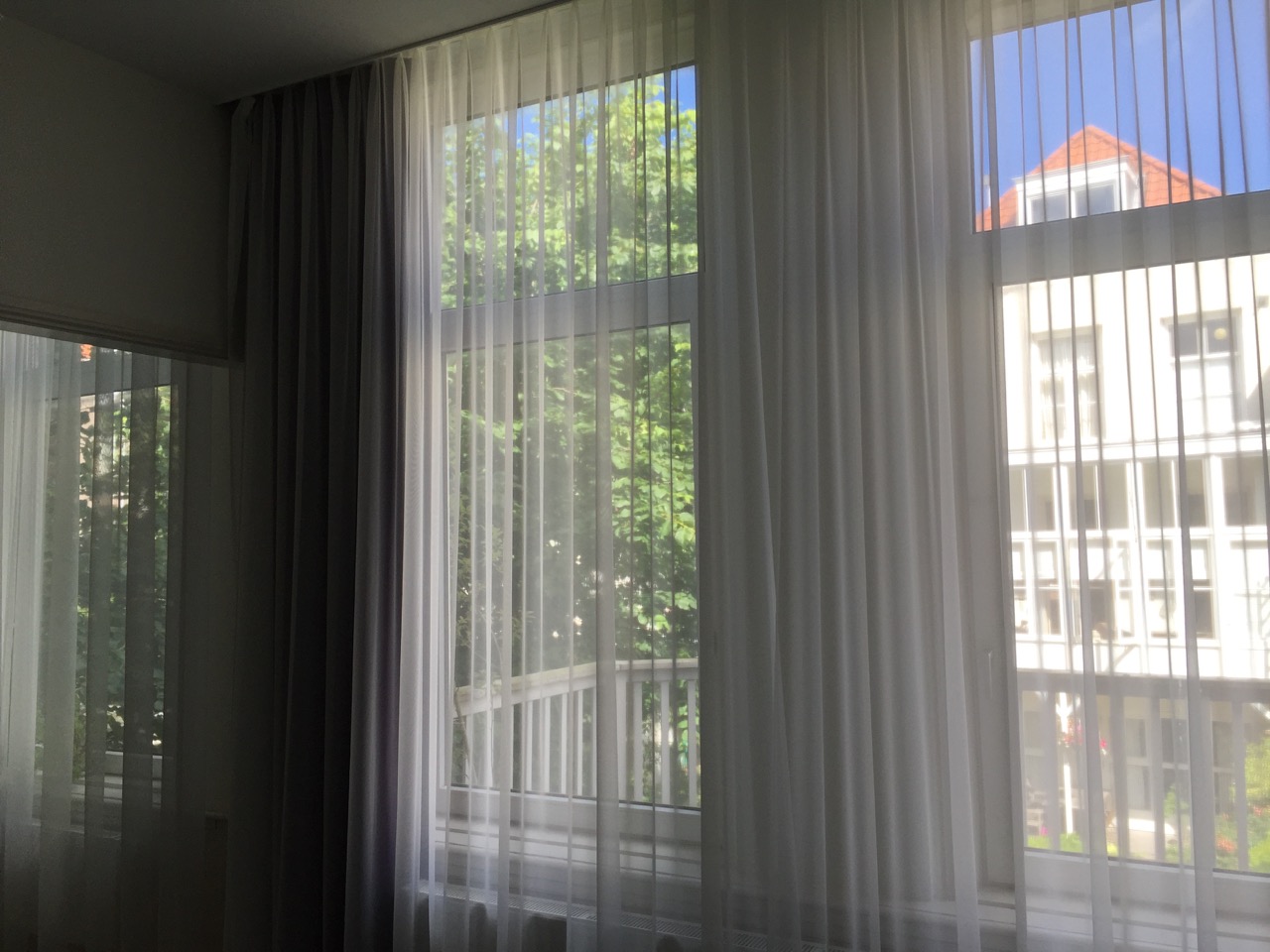
In Den Haag I see the neighbours, so I usually had one of the curtains closed, because even though it is see-though, there was a certain feeling of privacy, and the light shines in a more diffuse and cozy way. But now with a recently adopted cat in the house, they are always open.
A pile of books, both professional and others
The longer bits
The first question is from Nina:
Tell a bit about what inspires you — I wonder if the rich diversity of your work is perhaps also connected to having these different geographical and cultural backgrounds and perspectives.
Clearly I’m the result of a mixed background in some way, and living in different cities/ countries/ continents does add to that diversity. However, I attribute the diversity in my work more to my personality rather than cultural contexts. I am a curious person, I like challenges and I like to explore. But no matter where I am, I always find myself attracted to the same things: structures, ornaments, patterns, textures, rhythm, layers and details. These elements are not only references and inspiration, but also part of my work. I like to play with the possible combinations of different elements, and how to transform them into something new.
In design school I learned to always answer the needs of the clients in the projects, trying not to impose personal preferences. That probably was another reason to develop a skill set of being able to come up with a variety of results, to address different needs and types of clients. Later I felt that I wouldn’t like the idea of being linked to one single specific style. Having such a signature works for some professionals, but it also seems to me that they could become hostages of their own work. Personally I prefer to play around and face each project as a new challenge that needs its own answer. There are times when the art director comes with a preconceived idea and there is no space to propose something else, but when there is a good collaboration between the professionals involved, amazing and fun things can happen.
I will continue a bit with the geographical topic – you decided to base yourself in a country which is different in many ways from Brazil. I am curious in knowing what was the motivation behind moving. And instead of generally asking about cultural differences, I want to ask what are the differences that apply to you?
São Paulo and The Hague are significantly different in many ways indeed, as anyone would expect. I love both cities, but definitely at this point in my life I want to be here, and it took me a while to realise that. There are many factors and side stories that led me to this decision, but I’ll try to focus on what I consider to be the main ones.
The first time I visited The Hague was in January 2010. I came here to see the city and the Type and Media studio before applying for the MA at KABK http://typemedia.org/. It was a very cold afternoon and even though I was here very briefly, I felt an immediate connection. Naturally, I was over the moon when I got accepted for the next class – will never forget the feeling when I received the “Yes” e-mail at 5 am someday in April while working overnight. When I moved in the end of August, I could not anticipate how busy and stressful that year would be for me. After graduation all I wanted to do was to go back “home”, where my parents were renewing the family apartment, while they were living in another city, and since I also have a thing for architecture/ interiors, I just dived into in that project for a few months, but that is another story.
Fast forward to 2013, I was living and working in São Paulo. There were many things happening and I desperately needed a break from everything and everyone, so I went to a private island http://ideasisland.com/ to spend 10 days on my own, including my birthday – that was such a privilege, and honestly one of the best experiences I ever had in my life. After that I kept trying to replicate that peaceful environment, where I could be quiet, sort of isolated, and able to focus on one project. The other attempts were not very successful, but the last one was early in 2014, when I figured the Type and Media year was amazingly productive, so I could try spending two months in The Hague to work on a few projects to get at least one done. Well, the projects are still unfinished (ironic right?!) but it was during that trip that I finally decided to move.
One day I was having drinks with fellow designers in one of my favourite bars here, when someone asked if I lived in The Hague, to which Kai Bernau replied that I was a semi-permanent resident – because I was visiting The Hague very often in the past years. His comment was followed by the question: “So why don’t you live here?”. I didn’t have a reasonable answer and that made me wonder. That night I went back to the apartment, started researching visa requirements and made an appointment at the Dutch Consulate in São Paulo for a day after I would arrive back in Brazil. The next day I started to look for a place to live, even though I would only move months later. Luckily, I do live in the house I first spotted back then.
I think that São Paulo breaths anxiety. When people ask: “How are you doing?”, the default answer is: “Rushing”. Everyone is rushing, all-the-time! Absurd deadlines, working nights, weekends, non-stop craziness. That is how it felt for me then. So instead of living in a city that has a lot to offer, but makes me need some breaks to actually be productive in a positive way, feel healthy and sane, I could live full time in a place that has a different rhythm and visit São Paulo occasionally to meet family and friends.
I can list a lot of reasons why I love The Hague, including the type community and the beach, but the bottom line is that here I feel at home and my life has changed in meaningful ways, for the better.
Whenever I see you, I feel that you are always so full of energy for organising. It seems that in those events you are actively organising you have a double role: seeing the large picture as well as the tiny bits (such as getting people up on stage on time). What are your thoughts on it? How does this kind of activity reside with designing?
Thank you! There is something about being in the rush of the backstage of events that gets me going, and this has happened so often in my life that now is really difficult for me just to attend even a single talk and sit still, without looking around to analyse the details.
I could try to make a parallel between organising events and being a type designer, as you said, focusing on the macro and micro at the same time, from the balance of the handles on a bezier curve to the color of text, but the fact is that for me those things don’t mix, they are separate activities. The only overlap is that the events are always for the type community, so the content, networking and conversations are useful in the design work as well.
Until recently I could also make a clear distinction between designing and organising because all the events I organised (or helped in the organisation) were done on a volunteer basis, while design was mostly paid commercial work. I guess many people do not realise that at ATypI http://atypi.org/ for instance, the only paid position is the executive director. This means that I did invest countless hours in the making of the conferences, not to mention paying my expenses out of my own pocket, just for the sake of helping out to make the conferences the best they could be. I joined the board of directors in 2010, but in the following years I was focused on the Country Delegates, so Amsterdam, in 2013, was the first ATypI conference where I was truly involved. Well, to be fair, not only involved, but in charge of. Years of experience with other events since college came in handy when dealing with a big challenge, which was the case since there was no one locally who wanted to be responsible for the organisation of the event.
This year ATypI has a new executive director, Tamye Riggs. I met Tamye for the first time at TypeCon 2005 in New York, where I volunteered to help her, doing whatever was needed. It was a great conference, of which I have fond memories. We got along very well back then and we still do, so this July I started a trial period of officially working part-time for ATypI to assist Tamye with the conferences.
Since last year I have been invited to other teams and opportunities where design is also part of the work, but not the main focus. I still haven’t fully figured out how to balance these activities within my working hours, but I won’t worry about that for now, just consider that as long as I enjoy the work, even with all the eventual headaches that come with each one of them, I will keep multitasking.
In your work you involve a lot of materials. This includes your hand lettering and letterpress work. We live in a time when those manual skills are not necessary at all, so why do you still do it? Seems to me like a rather conscious decision. Where does this need comes from?
It is definitely a conscious decision and there are different reasons for it. One of them is that architecture/ interiors side, which is also related to the fact that my bachelor was in Industrial Design (with emphasis in graphics in the last year). When I started college, I thought I would design chairs for the rest of my life, but then I found out about graphic design and immediately fell in love with it. However, this urge for dealing with 3D elements stayed with me. Another reason is that I am a confessed perfectionist. When you’re designing with digital tools, it is very easy to see what you’re doing as a (next to) final solution and start tweaking details, when you still should be in the sketching phase. The allure of the vector! More often than not I would get into the detail part before I should, probably because of this need for everything to be “perfect”. So, the thing is… there is no absolute perfection!
One way I deal with that is drawing by hand and having that piece, which was produced after a number of sketches, as an end result for some projects. With something handmade you have to accept the imperfections here and there, and those are usually what makes it real and interesting. The question is: how much imperfection is okay for you? That got me to the other end of the spectrum, where I can sketch things forever and never finish a project if there is no deadline, hence so many projects in my drawers/ shelves never saw the light of the day. When the deadline is a super short one, which was often the case in São Paulo, then I delivered a quick result, but that doesn’t mean I was personally satisfied with it.
I do not really agree with the statement that nowadays the manual skills are not necessary. For more than a decade we can see people looking for solutions beyond the digital outputs and returning to analog tools. There is a letterpress revival and increasing interest for calligraphy and hand lettering. We can clearly see the demand reflected in the number of courses available, new tools in the market, and the high popularity of custom handmade designs. I find it interesting how handmade and digital are being used together and interesting results are coming out of that.
Real materials and manual process do have a stronger appeal to me. Results are unique! Even if you draw the same line over and over again, it will never be the same. That is also true for letterpress printing, where prints can vary due to the change of conditions. Every time the support meets the inked surface, it is a new encounter which could bring different results – then the messy ones are loved and appreciated as much as a neat ones.
Ornaments, and especially the Kaba ornament- working with them is a slow exercise that requires a lot of patience. You also dealt with it in your MA in LCC, in masking tape lettering and in the TypeTiles projects. and Where does your fascination with it comes from? What do you feel about this repetitive process?
One would think that it could be a tedious process, but I just don’t feel like that at all. When I’m working with ornaments I’m in a flow and I just don’t see time flying by. It doesn’t feel tricky or difficult or anything like that. Working with metal type ornaments, specially the Kaba, is just like solving a puzzle, finding a place for each element until you get the desired result. There is a structure behind it, a geometry, and seeing that makes it easier. Letterpress is basically physics and math: you cannot have two materials in the same place at the same time (they would need two different runs/ layers of print) and you need the white spaces to complete the lockup, and it’s all about finding what fits where and how, down to 1pt adjustments, when necessary.
I always had a crush for ornaments in general and type ornaments are just like tiles and other building blocks in decoration. They are also a part of typography that is not specific to any language. They can be used in combination with different typefaces in a wide range of contexts. I specifically started paying more attention to them during my MA at LCC in 2005. It was my tutor, Paul McNeil who identified my love for ornaments and he was absolutely right! Then I started researching the subject and my final project was an ornament type family, composed by a series of illustrations based on succulent plants. They had a specific way of working to generate regular and irregular patterns, be used as borders or simple illustrations. It was about how to place the illustrations in the character set to make the best use of them for different outcomes. In the end of the year Paul gave me a set of the Monotype ornament broadsheets, which I proudly have displayed on the walls of my studio in São Paulo.
Since then there were a few projects with ornaments here and there, but recently with Bram de Does passing, I felt like I missed the opportunity to ask him all I wanted to know about the development of the Kaba, and that triggered me to come back to the subject, researching type ornaments. It is still too early to say what will come out of this, but I listed a number of questions I have and started sketching some new projects, one of them being a methodology for pattern making based on type ornaments.
Do you feel in a way like some kind of delegate connecting the type scene in Brazil with other places? And vis versa?
Not really. I was the Brazilian ATypI Country Delegate for a few years and wrote the yearly reports about what was going on in Brazil. That was interesting to see a panorama of what had been accomplished, and how the local type scene was changing. This perception was useful for finding the right timing for a more substantial contribution, which was proposing for the ATypI conference to be in São Paulo in 2015.
Since I started going to ATypI in 2004 and TypeCon in 2005, I heard people asking about when we would organise them in Brazil. It was thought provoking, but not so realistic back then. There were many initiatives that had to happen for Brazil to have a larger type community which would support an international conference – several events, books translated and published, exhibitions, workshops, projects developed, more professionals working in the area, typography being taught in more universities, up to a post graduation in type and typography being created. The local type conferences were becoming as big as the international ones. The international speakers that were visiting had a great time and were reporting how the Brazilian type community was welcoming. It was time to take a step further. Brazil was also selected for other international events, with the World Cup in 2014 and Olympics in 2016, so it was fitting to organise the conference in the year in between.
Having the conference in São Paulo last year was something extremely significant on many levels, and I believe we are still going to witness the repercussions of it in years to come. It was also specially gratifying to me to be able to invite all those international attendees to the school I studied and the neighbourhood I lived, to meet the other fellow designers in Brazil that don’t usually travel abroad for type events. Funny enough, I organized ATypI Amsterdam from São Paulo and was part of the organisation for ATypI São Paulo from The Hague. But to finally answer your question, generally I prefer to think that I connect people, regardless of their nationality.
And now — a bonus! I thought it would be nice to have our next interviewee (hold on, you will read it few lines down!) that Marina chose ask her a question. So here is what the secret interviewee asked, followed by Marina’s answer:
If you could go back in time and spend an hour with 22 year old Marina, where would you take her, and what would you talk about?
That is a fantastic idea! But if I had this choice, I probably wouldn’t do it, not to interfere with what happened. I am grateful for all the good and the bad, to take me to where I am today. I know it sounds cheesy, but it is true.
In the past few years I have seen many initiatives that make it easier for you to be a nomad professional, working remotely and traveling all the time, spending a few days, weeks or months in different cities across the globe. Whenever I see things like this, I wish I had done that (if these initiatives existed) in my twenties. The idea is still attractive, but now I found my home and there is a lot this place is offering me, including the idea of finally creating some roots. So in a parallel reality, I would take my younger self to a travel agency and buy her a ticket to spend one year, or more, traveling around the globe. We would discuss where to go and why.
You can see Marina’s work here.
Next interviewee …
Marina is nominating the next lady to be interviewed:
Edit*: For the next interview I would like to suggest Luisa Baeta. We are both Brazilians who did international Masters in type design, during the same year, but in different schools. We both also moved around the world a couple of times. Even though there are similarities, we have very different experiences, so I would like to ask her: which are the strengths you see in the type communities in each of the countries you lived? Anything you would like to see improving in any of them? (Brazil, UK, US, other?)
* Marina originally suggested the talented Lila Symons. It didn’t work out at the moment, but I am hoping to get a chance to interview her in the future, and you readers will be the first to know.
On a personal note:
Marina managed to sweep me with her Kaba ornament enthusiasm. It now seems to me as if it’s the perfect little black dress or the eternal white t-shirt. The TypeTiles project brings up an interesting discussion about organising and planning vs spontaneously and expression. I believe this discussion is also inherent in Marina herself.
I had many things I wanted to know more about, and I was having a hard time finding enough material about Marina. This made me a bit scared by the gap between talented and humble people and our knowledge of what they do.
Hopefully, this interview and the whole series will shed some light on stories that hidden from the public eye.

